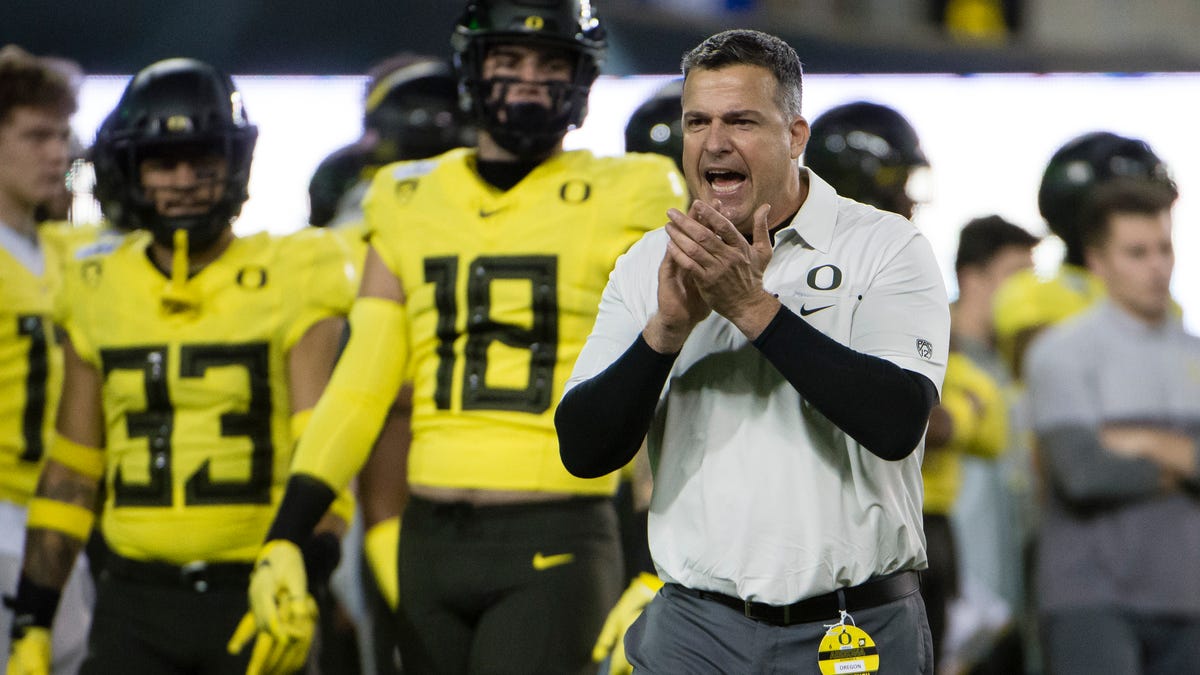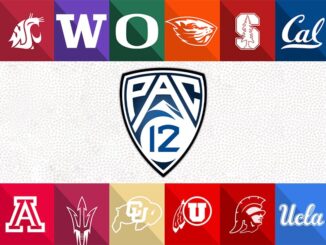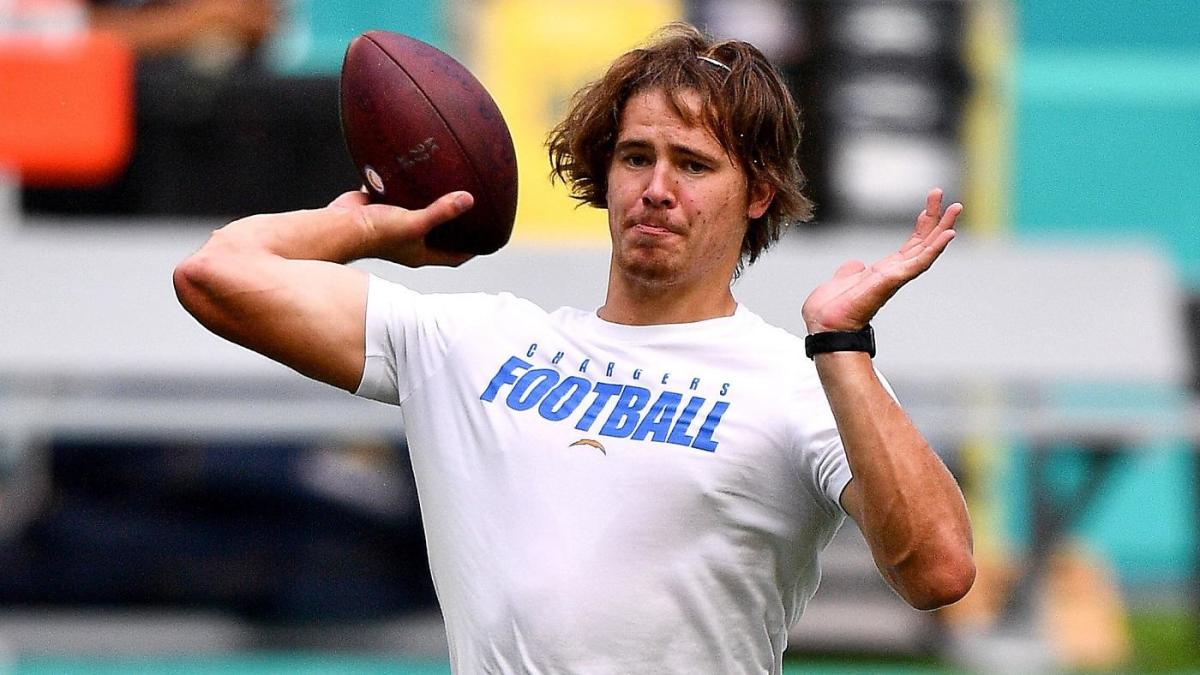
Previewing the 2020 Pac-12 Football Season
Today, we’re taking a look at the 2020 PAC-12 football season and how our system rates each team.
With a host of coaching changes, quarterback changes, and game cancellations, this looks to be a dynamic season that overflows with excitement and uncertainty.
To see a complete list of rankings for all 130 FBS teams, please visit us here.
1. Oregon (national rank: 14)
UO has a ton of talent returning to a team that returned to double-digit wins in 2019.
Tyler Shough has the inside track at quarterback but will be challenged by often-injured Boston College transfer Anthony Brown. Either way, the Ducks appear to be in good shape at the position.
Although Shough only threw 15 passes last season, he played in five games and demonstrated an outstanding acumen for play recognition and reacting to pressure.
Brown had three years of experience before transferring from Boston College. Although his passing accuracy wasn’t great, he has outstanding leadership skills and composure.
Oregon’s offense has been frustrated in past seasons by dropped passes, but the return of Johnny Johnson III, Jaylen Redd, and Mycah Pittman suggests those problems are in the past. Johnson had 57 catches at more than 14 average yards and Redd will flourish in the slot as new offensive coordinator Joe Moorehead opens things up and shows why he is one of the most creative offensive minds in the business.
The offensive line lost four full starters but returns three others who saw a lot of action plus left tackle Penei Sewell, who was acknowledged as the best offensive lineman in college football in 2019.
Running backs C.J. Verdell and Travis Dye are among the best in the Conference and each is likely to surpass 6.5 yards per carry. Both are durable and will benefit from increased opportunities as receivers.
This looks like the year the Ducks will produce a truly elite and disruptive defense despite the loss of four-year starting linebacker Troy Dye.
As a pure freshman, defensive end Kayvon Thibodeaux led the Ducks with 14 tackles for loss to go with nine sacks. Tackle Jordon Scott is a proven two-year starter who adds 322 pounds of run-stopping heft to the middle.
Mase Funa and Isaac Slade-Matautia lead this year’s linebacking unit but the depth behind them is unproven and may be a problem.
The strongest unit will be the secondary where UO has dynamic talents Verone McKinley III and Jevon Holland who each had four interceptions Also returning to the back end are Brady Breeze, Tomas Graham Jr. and Steve Stephens IV.
Oregon finished 11th in the nation for fewest yards and ninth for fewest points. Expect those numbers to be noticeably better now that ten of eleven defensive starters are returning.
The Ducks are at home against all four of their most-ardent challengers, Washington, Stanford, Arizona State, USC.
I project nine wins in nine games.
2. USC (national rank: 20)
USC will have an impressive season and will likely be ranked much of the time.
Quarterback Kedon Slovis had a spectacular freshman season and, if he stays healthy, will likely have his name on some Heisman lists. Working in a quick-pass Air Raid system, Slovis completed more than 70% of his passes but needs to recognize his targets faster and release the ball sooner.
Trojan fans were frustrated by a running attack that just never seemed to produce like it should. Most of the offensive line and all five top running backs return, led by Vavae Malepeai (4.8 ypc) and Stephen Carr (5.5 ypc), and they should finally make this a respectable unit.
Despite the graduation of Michael Pittman Jr., the receiving corps has plenty of play makers as well as enviable depth. Amon-Ra St. Brown and Tyler Vaughns were secondary targets yet combined for 151 receptions, 1954 yards, and 12 touchdowns. Also watch for Drake London to burn a lot of secondaries.
Defensively, the Trojans gave up 5.7 yards per play, which put them light years away from playoff contention. Pass defense was the primary culprit, as opponents averaged over 246 yards per game through the air.
I believe that Helton misfired in his hiring of Todd Orlando from Texas to fix the defense. Orlando was fired at Texas on December 1 after the Longhorns finished 127th in pass defense and gave up 292 yards per game.
While this season looks like a PAC-12 South title, the next two years appear precarious because of sparse recruiting in 2018 and 2019.
I project seven wins in eight games.
3. Arizona State (national rank: 32)
There are a lot of changes in Tempe these days as coach Herman Edwards has replaced both coordinators, and two high performers are gone from a defense that was no better than 80th in yards per play.
Even so, the Sun Devils have some talented skill players on offense with quarterback Jayden Daniels and Frank Darby, who is one of the best long-ball receivers in America.
As a pure freshman, Daniels completed better than 60% of his passes for nearly 3000 yards and he threw just two interceptions in 338 passing attempts.
I project that the Sun Devil rushing attack is going to be a problem after Emo Benjamin left early for the NFL. Not one of his backups reached 20 carries in 2019 and none with more than 10 carries reached a three-yard average.
The offensive line produced the 74th team ranking for yards per play, 65th in yielding tackles for loss, and 103rd for yielding sacks. Two full-time starters return along with two others who started at least three games. Two Power Five transfers will also help.
Pass defense is the biggest need for ASU this season. The Devils ranked 115th in giving up passing yards and that was caused by horrible coverage among defensive backs. Opposing quarterbacks completed 64% of their passes for more than 265 yards per game.
Improvement should be forthcoming because all six of the top defensive backs return including Jack Jones, who had three interceptions, 45 tackles, and two Grammys in the ‘60s.
Defensive lineman Jermaine Lole posted 72 tackles, 10 tackles for loss, and 6.5 sacks while linebackers Darien Butler and Merlin Robertson have proven their effectiveness. But so far, there isn’t much depth behind them.
ASU is switching from 3-4 to 4-3 and more man coverage under former Cincinnati Bengals head coach Marvin Lewis.
The Sun Devils kick off the 2020 season at home against USC in an early showdown for the PAC-12 South title. ASU lost to USC last season in Los Angeles.
I project a 6-3 record, but this is Edwards’ third season in Tempe and it was in his third season in prior coaching gigs that his teams took dives. He has increased ASU’s recruiting dramatically, so perhaps there is enough help to keep the Sun Devils climbing.
4. Utah (national rank: 35)
Quarterback Zach Moss and running back Tyler Huntley both graduated from the offensive skills group, and eight of the top 11 tacklers are gone from the defense.
There is almost ZERO attrition from the offensive line and there are two quarterbacks, Jake Bentley (transfer from South Carolina) and Cameron Rising (transfer from Texas), with the ability to lead the Utes well.
Brant Kuithe and Bryan Thompson combined for more than 1000 yards receiving at a whopping 20.8 yards per catch, and there are others ready to step up, so Utah won’t have a problem finding targets.
The biggest problem is the lack of proven running backs. I project a 31% drop in effective producers, which means defenses can focus on stopping receivers.
The UU defense finished sixth in the nation for fewest yards per play. While that was a nice accomplishment, it crumbled in successive games against Oregon and Texas, both of which had quarterbacks with lots of firepower—quarterbacks similar to those Utah will face with USC and ASU.
Only two starters return on defense and I’m pointing to a major drop in pass coverage for this team that led the nation in yards-per-pass defense of 2019.
With a major rebuild of the offensive backfield, a good chunk of the defense, and having no quarterback equivalent to Moss, Utah is a 5-4 team.
5. Washington (national rank: 36th)
There’s lots of change at UW after the Huskies lost their head coach, starting quarterback, and top running back.
Jacob Sirmon is the early favorite at quarterback, but there are no clear playmakers at running back.
The receiving corps is solid with Terrell Bynum and tight end Cade Otton each having more than 30 receptions and long-ball Puka Nacua is set for an outstanding sophomore season.
Plenty of work is needed on the offensive line that returns two starters from a unit that I ranked 37th in the nation.
On defense, the Huskies were 47th for stopping the run and 55th in giving up passing yards and should improve dramatically since nearly the entire defense returns.
Junior linebacker Joe Tryon leads a disruptive group after posting eight sacks and 12.5 tackles for loss. He’ll be joined by defensive back Elijah Molden, who led the team in tackles (79) and interceptions (4).
New head coach Jimmy Lake hired two new coordinators, but those hires have left fans scratching their heads as we discussed here.
Washington has road games at Utah, Oregon and USC. I project a 5-4 record.
6. California (national rank: 48)
Even if quarterback Chase Garbers stays healthy, Cal’s history of frustrating offense (117th in FBS) will keep the Bears from challenging for the PAC-12 North title. Garbers gives hope for better but he has a history of injuries and no backups who have shown they are ready.
Coach Justin Wilcox has replaced most of his offensive coaching staff.
Christopher Brown Jr. was nearly a 1000-yard rusher but he is more durable than spectacular.
The receiving unit has plenty of players with some experience, but only Nikko Remigio had more than more than 21 receptions.
The offensive line will be more experienced, but that experience was less than adequate in 2019 as the Bears ranked 124th for allowing sacks (3.62 per game) and 108th in tackles for loss allowed (6.92). Nearly 15% of Cal’s plays ended with a loss of yardage.
Evan Weaver is gone from the defense after 103 solo tackles. Five of the top six tacklers are gone along with three top defensive backs.
Cal has been known for bringing defensive pressure, but that will be risky in 2020 because the secondary doesn’t rate high in my system’s index of returning effective production.
Most experts view Cal as a challenger in the PAC-12 North. But, the Bears have lots of roster questions plus crossover games with USC, Arizona State and UCLA. I see three wins in nine games.
7. Arizona (national rank: 51)
Watch out for the Wildcats because UA has all of the pieces to make a dramatic turnaround. It begins with Kevin Sumlin’s overall recruiting successes, which have been better than his predecessor and were responsible for luring quarterback Grant Gunnell from Texas.
As a pure freshman in a backup role, Gunnell threw for over 1200 yards, completed more than 65% of his passes, and posted an astounding 0.6 interception ratio. Although former quarterback Khalil Tate had dynamic athleticism, he was hampered by injuries, inaccurate passing, and never fully fit with Sumlin’s offense. Gunnell will be a noticeable step up at the position.
Running back J.J. Taylor left early for the NFL, but the Wildcats have Garry Brightwell and Nathan Tilford returning, and both averaged six yards per carry.
Eight of Arizona’s nine receivers are back, including Jamarye Joiner, who averaged an eye-popping 16 yards per reception and scored a touchdown every seventh time he touched the ball. Add former Oregon starter Brenden Schooler and you have the deepest receiving unit in the PAC-12.
Injuries to the offensive line put the brakes on a 37 ppg start in 2019, but they also created a great deal of experience for this season. In all, UA has eight lineman who started at least one game and accounted for 78% of all starts.
With Tate’s interceptions out of the way, this offense will prove it is among the best 25 in FBS.
The defense returns four of its top five linemen and all three of its outstanding linebackers. In all, the top four tacklers and top six tacklers-for-loss are back.
Arizona’s Achilles heel was its inability to stop the pass (126th) but a new defensive coordinator and four of the top six defensive backs should help.
I’m high on this team, and so is the schedule as UA gets Stanford, USC, Oregon, and Arizona State all at home. The Index projects three straight wins to start the season and 5-4 overall after the Wildcats were just 4-8 last season.
8. Stanford (national rank: 52)
Stanford has been transitioning from power football as we discussed here but so far, things have not gone well.
The Cardinal had an epidemic of injuries in 2019 and finished 4-8, the first losing season ever for coach David Shaw. In the offseason, 15 players hit the transfer portal and the Cardinal now faces shortages in many areas.
Davis Mills returns at starting quarterback after proving to be one of the more accurate passers in the PAC-12.
Two of the top three rushers graduated leaving Austin Jones as the only ball carrier with more than 10 touches. That doesn’t bode well for a unit that finished 107th in yards per carry.
Five top receivers are back, so expect Stanford to pass 65% of the time.
The Cardinal defense was a mess. It finished 109th for yards yielded per play (6.3) and 121st for stopping the pass as it yielded 280 ypg and opposing qbs completed 66% of their passes.
Three starting linebackers are gone from the defense, and that will hurt because they were Stanford’s top three tacklers and they were three of the top disruptors.
The deterioration of Stanford on both sides of the ball is manifest evidence of recruiting that has been declining every year since 2017.
Stanford must face Oregon and Washington on the road and also must play USC in crossover. Our Index points to a 3-6 season.
9. Washington State (national rank: 53)
The Cougars have an outstanding new head coach in Nick Rolovich. While he has plenty of proven experience to choose from, he doesn’t have any quarterback who has thrown even a single pass in the FBS. The position is wide open although Cammon Cooper is the odds-on favorite to be the starter.
Outstanding running back Max Borghi will get more touches in 2020 and is certain to surpass 1200 yards and do so at nearly a seven-yards-per-carry clip. He’ll need someone else to step up because WSU will run more in 2020.
All three of WSU’s top receivers were seniors, but the Cougars still have an astounding five players with more than 40 receptions last year.
Terrible pass defense frustrated fans last season but things will change in 2020 because Rolovich has proven his ability to build defenses. At Hawai’i last season, his defense finished 47th for defending the pass, and that is exactly 47 places better than what WSU did in 2019 (94th). Rolovich has also hired a new defensive coordinator in Jake Dickert, who directed Wyoming’s defense to yielding less than 18 ppg.
The Cougars should also be better at stopping the run with 12 of their top tacklers returning.
The linebacking group is strong and deep and led by Jahad Woods, who led the Cougars in tackles, tackles for loss, and finished second for sacks and third for interceptions.
Three of the top four defensive backs return, led by Skyler Thomas, who had four interceptions.
Overall, WSU will be unstoppable on offense and improved on defense. The Cougs get Oregon, Washington, and Arizona State all at home. I project WSU at 4-5.
10. Oregon State (national rank: 69)
I agree— the Beavers seem like they deserve to be higher, but questions on the offensive line and sparse experience at quarterback—plus replacing two top receivers—can’t be overlooked.
The journey upward will continue slow, but everything is on the way up at Oregon State under coach Jonathon Smith—wins, trends, statistics, recruiting, and drawing transfers.
Smith has talent and options at the quarterback position, as Tristen Gebbia finished 2019 strong and jc transfer Chase Nolan comes to town with plenty of acclaim.
Although Artavis Pierce graduated from the running backs, the Beavers have terrific talent and depth with Jamar Jefferson, B.J. Baylor, and Calvin Tyler, Jr.
OSU receivers won’t have leading receiver Isaiah Hodgins, who left early for the NFL, or tight end Noah Togiai, who graduated. But they will have long-ball speedster Champ Flemings with experienced help from Kolby Taylor and Tyjon Lindsey.
The offensive line was in the upper half of the FBS but must replace three starters. Development of the line will be critical if the Beavers are to average six yards per play again.
Defensively, Oregon State was middle-of-the-road in stopping the run but ranked 117th for stopping the pass. Obviously, it needs to be better and it should be after lineman Charles Moore transferred in from Auburn and can bring pressure.
OSU has a terrific set of linebackers led by Hamilar Rashed Jr. who finished third in the nation for sacks and has been named on most 2020 All American lists. Omar Speights and Avery Roberts led the team in tackles and both return to the backer group.
Defensive backs are good enough but not plentiful enough.
Because of an unproven quarterback, weak pass defense, and a tough schedule that includes road games against Arizona State, Stanford, and Utah, I am projecting 3-6.
11. UCLA (national rank: 86)
UCLA was 3-9 with quarterback Doria Thompson-Robinson still struggling with accuracy. But, the Bruins have no other options at that position since backup Austin Burton transferred to Purdue and Washington transfer Colson Yankoff has not yet been awarded eligibility in 2020.
DTR was injured last year, and if that happens in 2020, UCLA will be in a desperate situation because effective passing will be critical in 2020.
Razor-thin depth is also a problem in the running back room where there are more shadows than ball carriers. Not one returning running back had more than 13 carries last year. Yes, Demetric Felton had 86, but he’s not a running back. He is a slot receiver and even when he does carry the ball, he averages less than four yards.
The Bruins may find help in freshman recruit Jahmon McClendon, who has the power and durability to be an every-down back. His three-star rating may not overwhelm, but UC-Davis transfer Joshua Kelley wasn’t overwhelming either, and he is now in the NFL and had no Power Five offers coming out of high school.
Last season, the Bruins had a decent passing attack and a futile ground game, so it’s a wonder why they ran 53% of the time. Expect that to change in 2020, especially now that all five of the top pass catchers are back.
The offensive line was awful in 2019 (118th tackles for loss, 99th in yards gained per play, 120th sacks allowed) and now returns just one full-time starter and one-part timer after one lineman transferred and another retired.
The Bruins were 106th for turnovers, so just about everything in this offense needs work.
The Bruins defense gave up 35ppg and ranked 125th in average yards allowed per play and 129th (out of 130) in stopping the pass.
The defensive line was young and most of it returns but all three primary linebackers graduated.
The secondary was ineffective (129th for stopping the pass; 126th interceptions) and will now probably start pure freshman John Humphrey at one corner. Effective production projections in the back seven suggest the Bruins need to find at least two dynamic playmakers.
One good thing about a shortened schedule is that UCLA won’t lose as many games. It won’t win as many either. I believe it will be 2-7.
12. Colorado (national rank: 102)
Colorado lost a lot of its core with the loss of its head coach, starting quarterback Steven Montez, and NFL-bound receiver Leviska Shennault Jr.
Karl Dorrell is the new head coach and he brings decades of experience that includes a winning record in five years at UCLA.
Although Tyler Lytle is penciled in at quarterback, we are rating three-star 6’2”, 210-pound freshman Brendon Lewis as the Buff quarterback for 2020. Lewis had 14 scholarship offers and gives the Buffs the 17th best dual threat QB coming out of high school. He’s also known for his leadership and he gives CU a young player it can build upon.
Running back Alex Fontenot leads the return of Colorado’s top three running backs, but this group needs to get more than 4.1 yards per carry.
Despite the loss of Shenault and Tony Brown from the receiver group, K.D. Nixon and Dimitri Stanley are back and they combined for 64 receptions and nearly 800 yards. Dixon has the ability to stretch the field, which should take pressure off of the running attack.
The offensive line was less-than-average but most of it returns.
The Buff defense gave up 288 passing yards per game (123rd) and 4.5 yards per rush, so there is plenty of work to be done.
Mark Perry will lead a defensive line that was young in 2019 and is certain to be improved in 2020.
Linebackers are solid and fairly deep behind Nate Landman, who had 114 tackles.
Injuries wrecked the Buff secondary last year and if that doesn’t happen in 2020, it will prove to be better than average.
Expect Colorado’s disruption of offenses to be better although not spectacular.
Recruiting better talent will take time. Colorado was 5-7 last year. For now, I see 2-7 as optimistic.




